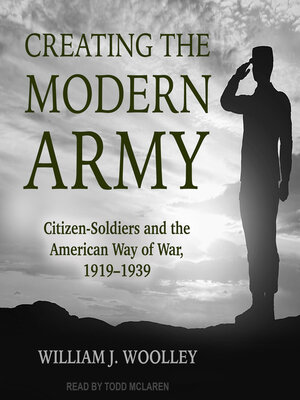Creating the Modern Army
audiobook (Unabridged) ∣ Citizen-Soldiers and the American Way of War, 1919-1939
By William J. Woolley

Sign up to save your library
With an OverDrive account, you can save your favorite libraries for at-a-glance information about availability. Find out more about OverDrive accounts.
Find this title in Libby, the library reading app by OverDrive.



Search for a digital library with this title
Title found at these libraries:
| Library Name | Distance |
|---|---|
| Loading... |
The modern US Army was largely created in the years between the two world wars. Prior to World War I, officers in leadership positions were increasingly convinced that building a new army could not take place as a series of random developments but had to be guided by military policy. In 1920, Congress accepted that idea and embodied it in the National Defense Act. In doing so it also accepted army leadership's idea of entrusting America's security to the Citizen Army, and tasked the nation's Regular Army with developing and training that force. Creating the Modern Army details the efforts of the Regular Army to do so in the face of austerity budgets and public apathy while simultaneously responding to the challenges posed by the new and revolutionary mechanization of warfare.
In this book Woolley focuses on the development of what he sees as the four major features of the modernized army that emerged due to these efforts.
The US Army that fought World War II was clearly a citizen army whose leadership was largely trained within the framework of the institutions of the army created by the National Defense Act. The way that army fought the war may have been less decisive and more costly in terms of lives and money than it should have been. But that army won the war and therefore validated the citizen army as the US way of war.
In this book Woolley focuses on the development of what he sees as the four major features of the modernized army that emerged due to these efforts.
The US Army that fought World War II was clearly a citizen army whose leadership was largely trained within the framework of the institutions of the army created by the National Defense Act. The way that army fought the war may have been less decisive and more costly in terms of lives and money than it should have been. But that army won the war and therefore validated the citizen army as the US way of war.







